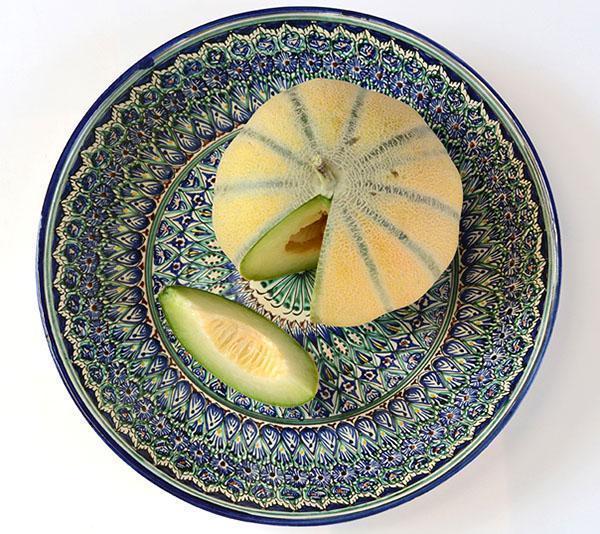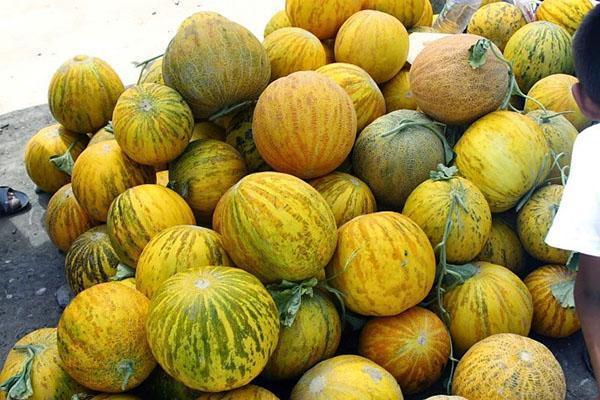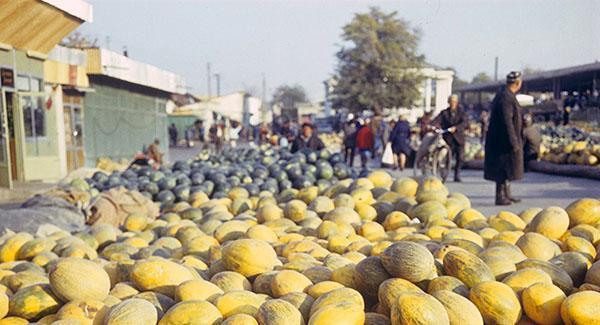Melon Bukharka is a great addition to food
 Melon Chogare or Bukharka, as the inhabitants of the former USSR are used to calling sweet fruits, belongs to the Central Asian early ripening variety of chandalak or handalak.
Melon Chogare or Bukharka, as the inhabitants of the former USSR are used to calling sweet fruits, belongs to the Central Asian early ripening variety of chandalak or handalak.
These are fruitful early ripe melons with round or slightly flattened fruits. Plants belonging to the Chogare cultivar have a greenish or light yellow rind covered with a network of cracks characteristic of the culture. The pulp is thick, with a melting juicy consistency. The growing season is 70–80 days. With proper watering and temperature and humidity conditions, the melon manages to accumulate a lot of sugar for a short time, but at the same time the fruit quickly overripes and cannot be transported.
Melon variety Bukharka 944

In the cut, the melon exhibits thick white flesh with a sugar content of up to 13.5%. The melon of this variety has a recognizable aroma reminiscent of a pear.
Due to the spoilage bark of ripe melons, they are removed from the melons unripe. The collection takes place in several stages, and the degree of readiness is determined by:
- by the appearance of a melon aroma;
- drying the whip;
- by changing the color of the melon;
- by the formation of a mesh pattern on the surface.
In Soviet times, the Bukharka variety was zoned into the Uzbek SSR and Kazakh SSR, traditional for the cultivation of melons and gourds. Today melon melons in these countries are occupied by other varieties. In Uzbekistan, preference is given to varieties of melons, the fruits of which are able to maintain their presentation for a long time and transfer transportation over long distances.
 According to these indicators, melons of the Chogare variety type do not compete with large sweet fruits of gulabi or other species. But they are still loved by the local population and are the first to appear in the vibrant bustling markets.
According to these indicators, melons of the Chogare variety type do not compete with large sweet fruits of gulabi or other species. But they are still loved by the local population and are the first to appear in the vibrant bustling markets.
Features of agricultural technology
The unpretentiousness and early maturity of the Bukharka variety allows it to be grown not only in the southern regions, but also in central Russia. At the same time, you can take advantage of the experience of Uzbek melon growers who use agrotechnical techniques for melons, typical for growing watermelons... True, due to the greater demands of the melon on soil fertility, the seeds are embedded in moist soil after fertilization.
In Central and Asia Minor, early melons are planted in April, when the soil temperature reaches 12-13 ° C. In spring, the risk of frost damage to sprouts in this area is minimal, and in central Russia, melons need shelter, at least until mid-June. The denser the soil, the shallower the planting depth should be. On average, in Uzbek melons, seeds are immersed in the soil by 4 - 6 cm, which provides plants with friendly germination and the rapid formation of a powerful root system.